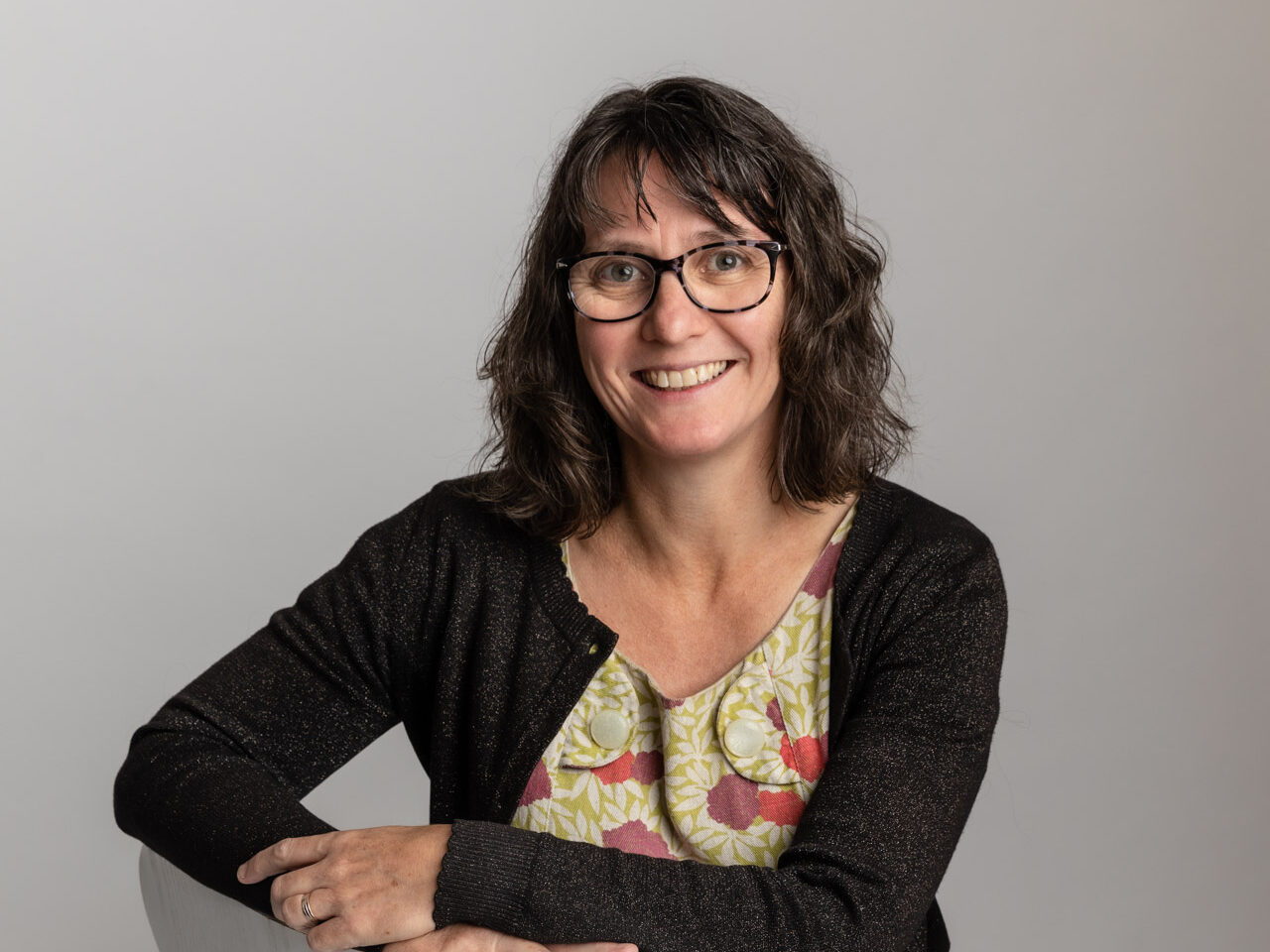There are many diseases that affect the skeleton: these range from common conditions like osteoporosis through to rare bone diseases like osteogenesis imperfecta. Even though we have therapies that can treat the symptoms of bone diseases, there are no cures that can give a patient a healthy skeleton.
There is hope in our research, though. While it may seem that our bones just sit there, the skeleton is constantly being renewed to adapt to changes in diet and activity levels. Some bone cells (osteoclasts) dissolve small pockets of old bone, while new replacement bone is formed by other cells (osteoblasts). These two cell types are controlled by a third cell type (osteocytes), that form a signalling network inside the bony tissue itself.
By studying how our different bone cells behave, we will learn ways to control them. Bone cell research opens opportunities for conditions like osteoporosis and osteogenesis imperfecta to be treated more effectively, as well as to find ways to protect the skeleton in diseases such as arthritis, cancer and chronic inflammatory conditions.
Current research projects
-
Understanding how bone degenerates with age in men and women
Age-related osteoporosis occurs, in part, because the vascular pores within the hardened outer shell of bone (the cortex) become larger with age. We are using the Melbourne Femur Research Collection, a unique forensic collection of human femur bones from healthy adults across the entire adult age range. We are using these samples to assess whether new bone produced by older men and women is structurally compromised. We will identify regions of bone loss by micro-computed tomography, index the cell populations within the pores by histology, and measure the composition of the bone that remains by synchrotron-based infra-red spectroscopy.
Signals that control cortical porosityCortical bone (the bone’s outer shell) forms through a process of consolidation, including the closure of blood vessel-impregnated channels. It is essential that some vascularised channels remain, to provide nutrients to bone cells and to allow egress of bone marrow cells, such as neutrophils, to the circulation. During ageing, these channels within the cortex expand, leading to skeletal fragility. Although the process is not understood, we have shown that it may be associated with increased JAK-STAT signalling in osteocytes, cells embedded within the bone matrix. We are now testing to see whether increased JAK-STAT signalling causes age-related cortical porosity, and whether this is mediated through a signal that promotes vascularisation.
Control of bone mineral content by osteocytesThe quantity of bone in the skeleton is not the only thing that makes it strong. Bone can be more fragile if the material is poor quality; an example of this is if there is too much calcified mineral in the bone, which leads to increased ‘brittleness’.
Through our work on the Eph/Ephrin family of tyrosine kinases, we discovered that this protein is important for osteoblasts and osteocytes to control the way that bone becomes a hardened, mineralised tissue. Our continuation of this work, in collaboration with the Australian Synchrotron, is helping us to discover how collagen and bone mineral are incorporated into the skeleton in a way that makes it strong.
Understanding bone formation on the periosteumOur third approach to understanding determinants of bone strength is to discover pathways that specifically stimulate the activity of cells located at the periosteum (exterior surface of cortical bone). This approach has emerged from the knowledge that increased bone formation on the outer surface of bone is more efficient at increasing bone strength than to deposit bone on the inner surface.
We are using genetically altered mice with thickened cortical bone, along with lineage tracing (genetically introduced fluorescent labels), to identify and track periosteal cell populations. By studying the cells and molecular mechanisms involved, our goal is to identify novel targets and pathways that may be used in future to improve bone strength.
People


- Emeritus Professor TJ Martin
- Dr Haniyeh Hemmatian, Research Officer
- Dr Martha Blank, Research Officer
- Blessing Crimeen-Irwin, Senior Research Assistant
- Narelle McGregor, Senior Research Assistant
- Ingrid Poulton, Senior Research Assistant
- Mary Louise Fac, PhD student
- Natalie Koh, PhD student
Student projects
How are lysosomal processes involved in bone mineralisation?
Lab: Bone Cell Biology & Disease
Supervisor(s): Professor Natalie Sims
Diseases focus: Healthy AgeingHow does the periosteum control bone width?
Lab: Bone Cell Biology & Disease
Supervisor(s): Professor Natalie Sims
Diseases focus: Healthy AgeingHow does bone composition change with ageing?
Lab: Bone Cell Biology & Disease
Supervisor(s): Professor Natalie Sims Dr Haniyeh Hemmatian
Diseases focus: Healthy AgeingSelected publications
Isojima T, Walker EC, Poulton IJ, McGregor NE, Wicks IP, Gooi JH, Martin TJ, Sims NA., G-CSF Receptor Deletion Amplifies Cortical Bone Dysfunction in Mice with STAT3 Hyperactivation in Osteocytes. J Bone Miner Res. 2022 Oct;37(10):1876-1890. doi: 10.1002/jbmr.4654.
Walker EC, Truong K, McGregor NE, Poulton IJ, Isojima T, Gooi JH, Martin TJ, Sims NA., Cortical bone maturation in mice requires SOCS3 suppression of gp130/STAT3 signalling in osteocytes. Elife. 2020 May 27;9:e56666. doi: 10.7554/eLife.56666.
Sims NA, Martin TJ., Osteoclasts Provide Coupling Signals to Osteoblast Lineage Cells Through Multiple Mechanisms. Annu Rev Physiol. 2020 Feb 10;82:507-529. doi: 10.1146/annurev-physiol-021119-034425. Epub 2019 Sep 25.
Vrahnas C, Blank M, Dite TA, Tatarczuch L, Ansari N, Crimeen-Irwin B, Nguyen H, Forwood MR, Hu Y, Ikegame M, Bambery KR, Petibois C, Mackie EJ, Tobin MJ, Smyth GK, Oakhill JS, Martin TJ, Sims NA., Increased autophagy in EphrinB2-deficient osteocytes is associated with elevated secondary mineralization and brittle bone. Nat Commun. 2019 Jul 31;10(1):3436. doi: 10.1038/s41467-019-11373-9
McGregor NE, Murat M, Elango J, Poulton IJ, Walker EC, Crimeen-Irwin B, Ho PWM, Gooi JH, Martin TJ, Sims NA., IL-6 exhibits both cis- and trans-signaling in osteocytes and osteoblasts, but only trans-signaling promotes bone formation and osteoclastogenesis. J Biol Chem. 2019 May 10;294(19):7850-7863. doi: 10.1074/jbc.RA119.008074. Epub 2019 Mar 28.
Ansari N, Ho PW, Crimeen-Irwin B, Poulton IJ, Brunt AR, Forwood MR, Divieti Pajevic P, Gooi JH, Martin TJ, Sims NA., Autocrine and Paracrine Regulation of the Murine Skeleton by Osteocyte-Derived Parathyroid Hormone-Related Protein. Journal of Bone and Mineral Research. 2018 Jan;33(1):137-153. doi: 10.1002/jbmr.3291.
ORCID profile: https://orcid.org/0000-0003-1421-8468
Google Scholar profile: https://scholar.google.com.au/citations?user=OPNV9eQAAAAJ&hl=en
Related news

August 2024
Celebrating 45 years – the hunch that led to a wonder drug used worldwide
Professor Jack Martin’s research began a discovery cascade that led to the identification of a revolutionary new protein and the development of a novel and effective drug therapy that is now used worldwide to treat osteoporosis, cancer and other diseases

December 2023
New funding to tackle age-related bone disease
Prof Natalie Sims has been awarded a prestigious NHMRC Investigator Grant to better understand the causes of age-related bone fragility.